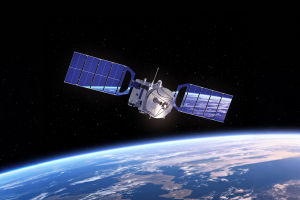Have you ever looked up at the night sky and wondered about the vast mysteries beyond? For centuries, humans have been fascinated by space, and thanks to advancements in technology, we now have spacecraft that allow us to explore the final frontier.
In this article, we’ll dive into what spacecraft are, how they work, and how they’ve evolved over the years.
What Are Spacecraft?
Spacecraft, also known as space vehicles or spaceships, are machines designed for travel in outer space. Unlike natural celestial bodies that follow predictable orbits or paths, spacecraft are engineered to be controlled and capable of altering their trajectory. They are essential for exploring the universe, studying planets, moons, and distant stars, and facilitating human missions in space.
The Different Types of Spacecraft
Spacecraft come in various shapes, sizes, and forms depending on their mission. Broadly speaking, they can be categorized into two main types: manned spacecraft and unmanned spacecraft.
Manned Spacecraft: These are designed to carry astronauts to space. Manned spacecraft have specialized equipment to support human life, including life support systems, oxygen, and radiation protection. They are built to withstand extreme conditions like temperature fluctuations, radiation, and the vacuum of space. Manned spacecraft are also equipped with airlocks to allow astronauts to conduct spacewalks and interact with their environment outside the spacecraft.
Unmanned Spacecraft: These vehicles don’t carry humans, but they play a critical role in our understanding of the universe. They include satellites, space probes, and rovers, all designed to collect data from various parts of space, such as distant planets and the asteroid belt. These spacecraft are essential for scientific research and provide us with valuable information about the cosmos.
The Components of a Spacecraft
Building a spacecraft is no easy task. Each component must be carefully designed to ensure that it can survive the harsh environment of space. Some of the key elements include:
Structural Shell: The outer body of the spacecraft is designed to protect it from extreme temperatures, radiation, and the impact of space debris.
Propulsion System: Spacecraft require powerful engines to travel through space. These systems allow spacecraft to adjust their orbits or travel to other planets and moons.
Life Support System (for manned spacecraft): If humans are aboard, the spacecraft must be equipped with a life support system to provide breathable air, water, and temperature control.
Thermal Control: Spacecraft experience dramatic temperature changes in space, so they require special systems to maintain an optimal internal environment for their systems and crew.
Categories of Manned Spacecraft
There are several types of manned spacecraft, each designed for specific missions:
Space Capsules: These are small, relatively simple spacecraft used for transporting astronauts to low Earth orbit (LEO). They have been used in programs such as NASA’s Apollo missions and the modern-day SpaceX Crew Dragon.
Space Stations: These are large, permanent spacecraft that orbit Earth and provide a base for astronauts to live and work in space. The International Space Station (ISS) is a prime example of a space station that has been continuously inhabited by astronauts from various countries.
Space Shuttles: Before they were retired, NASA’s space shuttles were used for a variety of missions, including deploying satellites and conducting scientific experiments in space. These reusable spacecraft were unique in that they could return to Earth and be flown again on subsequent missions.
Unmanned Spacecraft: Probes and Satellites
Unmanned spacecraft are just as important as their manned counterparts. They help us explore distant parts of the universe without the risk of human life. Some of the most famous unmanned spacecraft include:
Satellites: These are used for a range of purposes, from communication to weather forecasting and global positioning systems (GPS). Some satellites are also used for scientific research, such as studying Earth’s atmosphere or monitoring space weather.
Space Probes: Space probes like the Voyager spacecraft have been sent to the farthest reaches of the solar system. These probes collect valuable data about planets, moons, and other celestial objects and send the information back to Earth for analysis.
Rovers: Rovers like NASA’s Perseverance are designed to land on the surface of other planets, such as Mars, and explore their environments. These rovers can send back images and data that help scientists understand more about the conditions on other planets.
The Future of Spacecraft and Space Travel
As we continue to push the boundaries of space exploration, the technology behind spacecraft is advancing rapidly. Space tourism is becoming more of a reality, and companies like SpaceX and Blue Origin are developing spacecraft capable of taking private citizens to the edge of space. In the future, we may even see spacecraft capable of traveling to other planets, such as Mars, and supporting human colonies on distant worlds.
Our Journey with Spacecraft
Spacecraft have revolutionized our ability to explore the universe and understand our place within it. From the first moon landings to the latest space missions, these incredible vehicles allow us to explore distant planets, study the cosmos, and pave the way for future generations of explorers. As we look ahead to the next great discoveries in space, one thing is clear: spacecraft will continue to play a crucial role in humanity’s quest to unlock the secrets of the universe.
So, fellow Lykkers, what do you think? Are we on the verge of a new era in space exploration? Let us know your thoughts on the future of spacecraft and what it means for our collective journey into the stars!
Space Vehicles with realistic videos| Space Shuttle|Rocket|satellite|Mars Rover #english #space
Video by Poputa Kids TV- Educational Fu






